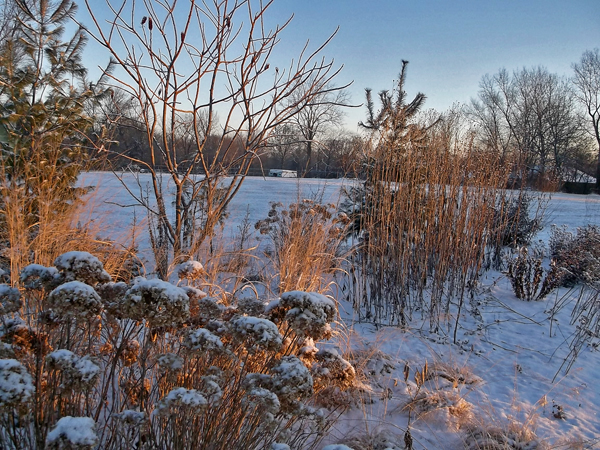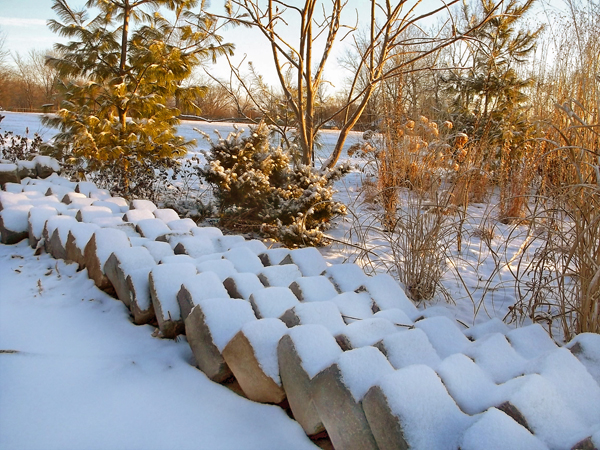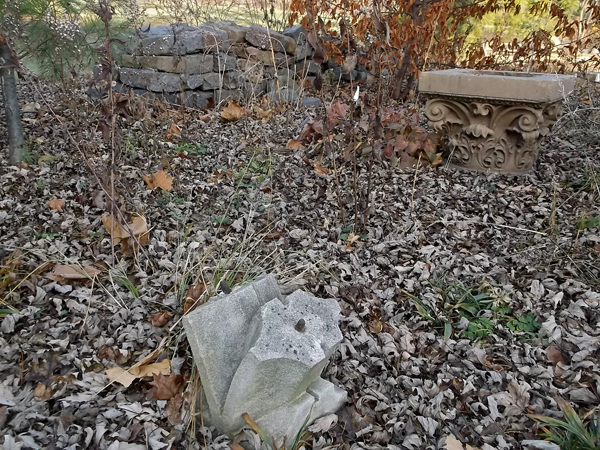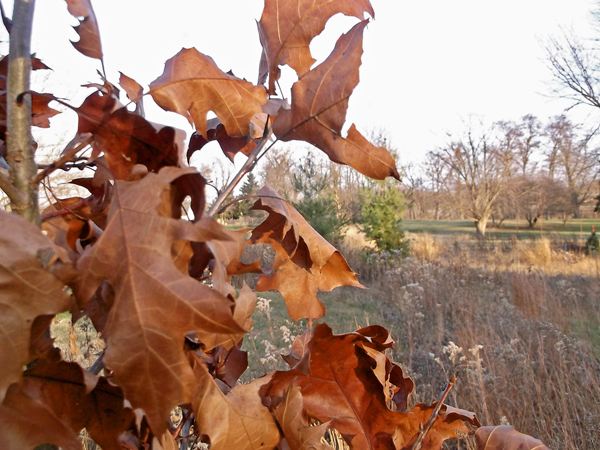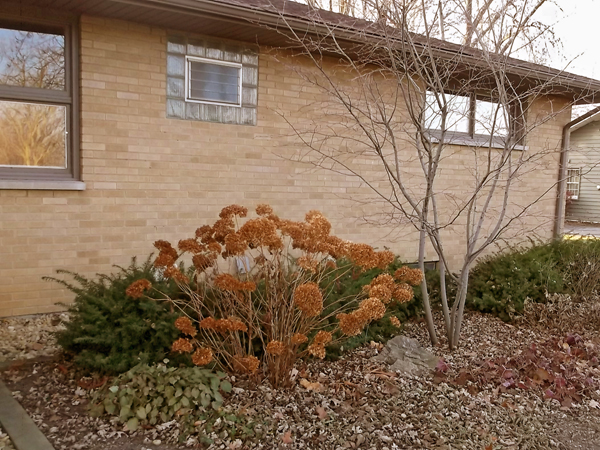I first met Dr. Jerry Wilhelm in Hopkins Park, Illinois, on the property of my good friend Dr. Marianne Hahn in July of 2000. I was part of a small group of about a half dozen people with the goal of botanizing this forgotten corner of Kankakee County. Marianne has been restoring Sweet Fern, the name of her sandy Black Oak Savanna, since 1998, when she purchased her first three contiguous plots of land. The 100+ acres have since been dedicated as an Illinois Land and Water Reserve.
Fourteen years later, that day is a bit of a blur and I took no photos to record the event, but one thing I remember of that midsummer’s day, other than being the one chosen of lug the five pound copy of Plants of the Chicago Region, was Jerry’s excitement of walking through a very large colony of Polygonum Careyi, Carey’s Heartsease, a fuzzy stemmed member of the buckwheat family. I can’t say that I felt the same excitement about the five foot tall plant, at my 5’8” frame, it was a struggle to walk through, and I was glad to get out of it, but I am not a renowned botanist and respected authority on Midwest native plants. No I am not. Nor am I the co-author of Plants of the Chicago Region, Jerry, however is. He along with the late Floyd Swink compiled the 4th edition, published in 1994 by the Indiana Academy of Science.
Eleven years later, our paths crossed again. This time it was in the Calumet Region of Chicago, Chicago’s Southeast Side. To celebrate twenty years of conservation in the area, a Thismia hunt was held, a veritable Who’s Who in natural areas conservation attended the event. Several groups were formed and sent out to scour different local areas, my group went to Miller Woods, near Lake Michigan in Indiana. It was great fun. Thismia, not seen in the Chicagoland area in nearly one hundred years, was not found that day either.

Stephen Packard, in the straw hat, looking on as Linda Masters speaks to the group at the Thismia hunt
Last month, I, along with two of my friends, had the pleasure of sitting through a presentation given by Dr. Wilhelm at Independence Grove, in Libertyville, Illinois. The host of the presentation was the Upper Des Plains River Ecosystem Partnership, or UDPREP, a group whose mission is “to preserve, protect, and enhance the Upper Des Plaines River Watershed through stakeholder education, collaboration, and technical assistance.” With that mission in mind, Wilhelm spoke primarily on the importance of soil moisture, and the role it plays in maintaining a healthy ecosystem.
Jerry started out by equating our role in the natural environment to that of a pilot at the helm of a plane; he recalled what his mother would remind him, when she felt he was going astray as a boy, namely, that we must learn the rules, and abide by them, if we don’t, we are airplane pilots that are “losing air speed, altitude, and experience.”
By burning woodlands and grasslands, as well as collecting wood for fuel, American Indians he said, historically, kept these areas open and full of sunlight thus playing a key role in keeping Midwestern landscapes in consilience, each separate element properly functioning so that other elements can function properly as well, as in a piece of mechanical equipment, a typewriter with all of its keys. The result of a properly functioning ecosystem is concinnity – harmony and beauty. As 21st century stewards of the earth, we need to know the rules and abide by them, or, as Wilhelm reminds us, we are headed for a rough landing.
“Annual autumnal burns are most healthy for biodiversity,” and he goes on to mention that they promote healthy populations of our native bees. If too much duff builds up, the burns are too hot, and has the opposite effect of biodiversity. In addition, annual burns, according to Wilhelm, keep organic matter high in the soil, thus reducing surface runoff during rain events, increasing available soil moisture to plants.
But soil moisture from rainfall is only one important source of water that is utilized by plants. He briefly noted that condensation and respiration are two other important sources of water – “production goes down 50% if plants don’t get morning dew.” As far as respiration as a source of water, as anyone who has spent a summer detasseling corn knows, the humidity inside a cornfield is much higher than outside the rows (this author’s personal observation.)
He went on to say that unburned, unmanaged woods result in a reduction of sunlight (less than 100 foot candles) hitting the ground layer, over time, as organic matter is lost from the soil, it is not replaced, there is no equilibrium as would be the case in a healthy system with more sunlight. No annual burns = no grass layer = no organic matter being replenished by the roots of these lost grasses and associated forbs (wildflowers) due to the increased shade in unmanaged woodlands. Grass roots die off, he mentioned, every three years, adding organic matter deep into the soil. The loss of this regenerative process results in rainfall that runs off the bare surface of the soil, causing erosion and exposing fibrous tree roots, rather than penetrating deep into the lower soil layers.
“Corn and soybean plants do not add enough organic matter to the soil to keep up with what is lost due to tillage.” Wilhelm mentioned that land can be in CRP (Conservation Reserve Program, administered by the USDA) for ten years and add ten tons of organic matter per acre and after 90 days of tillage that organic matter is completely lost. On average, he notes that, ours soils today contain less than 2% organic matter.
Organic matter in soil, according to Wilhelm, creates an important “interface” between “heaven and Earth” that is currently lost. Some of the effects include:
· Temperature regulation
Wilhelm mentioned that ant populations go down without thermoregulation, organic matter helps the ants regulate temperature for larvae. He noted that healthy woods have 15 to 20 ant species, while unhealthy woods have less than 5 or 6 species, and those are mostly non-conservative species.
With less than 52% soil moisture, soil loses its connection to the thermal mass of the Earth below.
· Reduces runoff
Soils with higher levels of organic matter not only allow water to enter the soil, it holds that moisture and makes it available to plant roots.
· Reduces leaching of potassium in to streams
The lack of organic matter (which binds soil elements) allows phosphorus to leach through soils into water bodies, a cause of filamentous algae blooms.
· Increases soil moisture balance
Organic matter holds a certain amount of water, making it available to plants, the remainder flows through the layers of soil, out through seeps and into rivers and other bodies of water. These moist soils along rivers therefore had trees due to the available soil moisture, according to Wilhelm.
Dr. Wilhelm touched on a number of points in his nearly two hour discussion. The overarching message, however, is that we all, by our actions, however seemingly small, determine how well the living environment all around us functions, or fails to function. Commoditized agriculture, he points out, does not take into account “high internalized costs” and that native plants, important keys on the typewriter that is our environment, continue to decrease overall – “A plant must be part of a system to fulfill its function, remnant ecosystems must be preserved so that we can grow out from them. We need to treat every drop of water where it falls, as a resource, not as something to get rid of – water is a blessing not a bane. Currently, we are losing airspeed, altitude, and experience.”


















